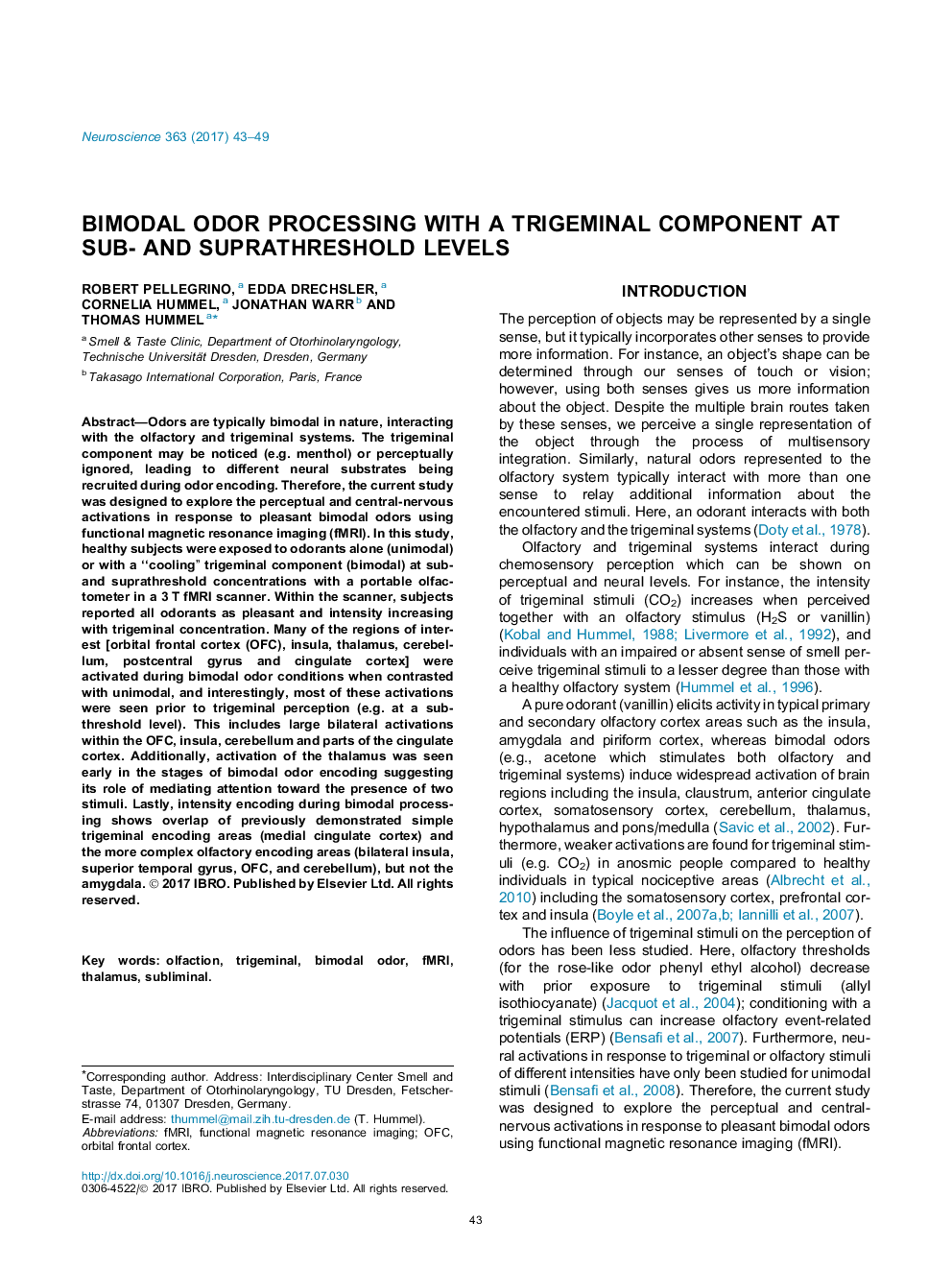| کد مقاله | کد نشریه | سال انتشار | مقاله انگلیسی | نسخه تمام متن |
|---|---|---|---|---|
| 5737332 | 1614713 | 2017 | 7 صفحه PDF | دانلود رایگان |
- Adding a trigeminal component at sub- and suprathreshold concentrations to an odor increases subjective intensity.
- Attention toward the presences of two stimuli may be mediated by the thalamus.
- Most chemosensory integration regions are activated before perception of a trigeminal component in bimodal odor processing.
- Intensity encoding shows overlap of simple trigeminal encoding areas and more complex olfactory encoding areas.
Odors are typically bimodal in nature, interacting with the olfactory and trigeminal systems. The trigeminal component may be noticed (e.g. menthol) or perceptually ignored, leading to different neural substrates being recruited during odor encoding. Therefore, the current study was designed to explore the perceptual and central-nervous activations in response to pleasant bimodal odors using functional magnetic resonance imaging (fMRI). In this study, healthy subjects were exposed to odorants alone (unimodal) or with a “cooling” trigeminal component (bimodal) at sub- and suprathreshold concentrations with a portable olfactometer in a 3Â T fMRI scanner. Within the scanner, subjects reported all odorants as pleasant and intensity increasing with trigeminal concentration. Many of the regions of interest [orbital frontal cortex (OFC), insula, thalamus, cerebellum, postcentral gyrus and cingulate cortex] were activated during bimodal odor conditions when contrasted with unimodal, and interestingly, most of these activations were seen prior to trigeminal perception (e.g. at a sub-threshold level). This includes large bilateral activations within the OFC, insula, cerebellum and parts of the cingulate cortex. Additionally, activation of the thalamus was seen early in the stages of bimodal odor encoding suggesting its role of mediating attention toward the presence of two stimuli. Lastly, intensity encoding during bimodal processing shows overlap of previously demonstrated simple trigeminal encoding areas (medial cingulate cortex) and the more complex olfactory encoding areas (bilateral insula, superior temporal gyrus, OFC, and cerebellum), but not the amygdala.
Journal: Neuroscience - Volume 363, 5 November 2017, Pages 43-49
